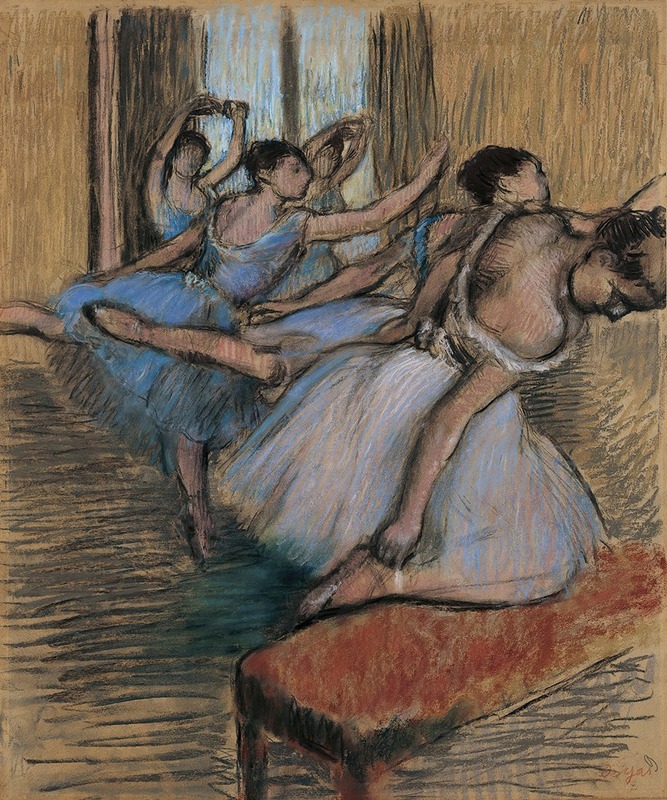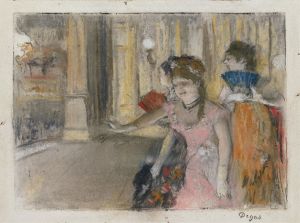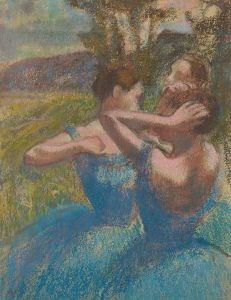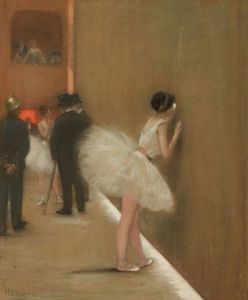
The Dancers
A hand-painted replica of Edgar Degas’s masterpiece The Dancers, meticulously crafted by professional artists to capture the true essence of the original. Each piece is created with museum-quality canvas and rare mineral pigments, carefully painted by experienced artists with delicate brushstrokes and rich, layered colors to perfectly recreate the texture of the original artwork. Unlike machine-printed reproductions, this hand-painted version brings the painting to life, infused with the artist’s emotions and skill in every stroke. Whether for personal collection or home decoration, it instantly elevates the artistic atmosphere of any space.
Edgar Degas, a prominent French artist associated with the Impressionist movement, is renowned for his depictions of dancers, capturing the grace and dynamism of ballet. One of his notable works, "The Dancers," exemplifies his fascination with the world of dance and his innovative approach to composition and technique.
"The Dancers" is a pastel on paper artwork, a medium Degas frequently employed to achieve vibrant colors and delicate textures. Created in the late 19th century, this piece reflects Degas's deep interest in the human form and movement, as well as his ability to convey the ephemeral beauty of ballet. The artwork typically features a group of ballerinas, either rehearsing or performing, depicted in various poses that highlight their elegance and poise.
Degas's approach to capturing dancers was unique for his time. Rather than focusing solely on the performance aspect of ballet, he often portrayed dancers in candid, behind-the-scenes moments. This perspective offered a more intimate and realistic view of the dancers' world, showcasing their dedication and the physical demands of their art. In "The Dancers," Degas's composition often includes cropped figures and unconventional angles, a technique that adds a sense of immediacy and movement to the scene.
The use of pastel in "The Dancers" allows Degas to achieve a soft yet vibrant color palette, enhancing the ethereal quality of the dancers' tutus and the subtle play of light on their skin. His mastery of this medium is evident in the delicate layering of colors and the fluidity of the lines, which convey both the grace and the tension inherent in ballet.
Degas's interest in dance was not merely aesthetic; it was also deeply rooted in his exploration of modern life and the human condition. Ballet, as a subject, offered him a rich tapestry of themes to explore, from the discipline and rigor of the dancers to the fleeting beauty of their performances. Through works like "The Dancers," Degas contributed to a broader understanding of the Impressionist movement, which sought to capture contemporary life with immediacy and authenticity.
While Degas is often associated with Impressionism, he maintained a distinct style that set him apart from his contemporaries. His focus on line and form, as well as his interest in capturing the essence of movement, aligned him more closely with the Realist tradition. However, his innovative compositions and use of color reflect the influence of Impressionism, making his work a unique blend of both movements.
"The Dancers" remains a testament to Degas's skill as an artist and his enduring fascination with the world of ballet. His ability to capture the beauty and complexity of dance continues to resonate with audiences today, offering a glimpse into the vibrant world of 19th-century Parisian ballet. Through his art, Degas not only celebrated the elegance of dance but also provided a window into the lives of the dancers, immortalizing their artistry for generations to come.


















